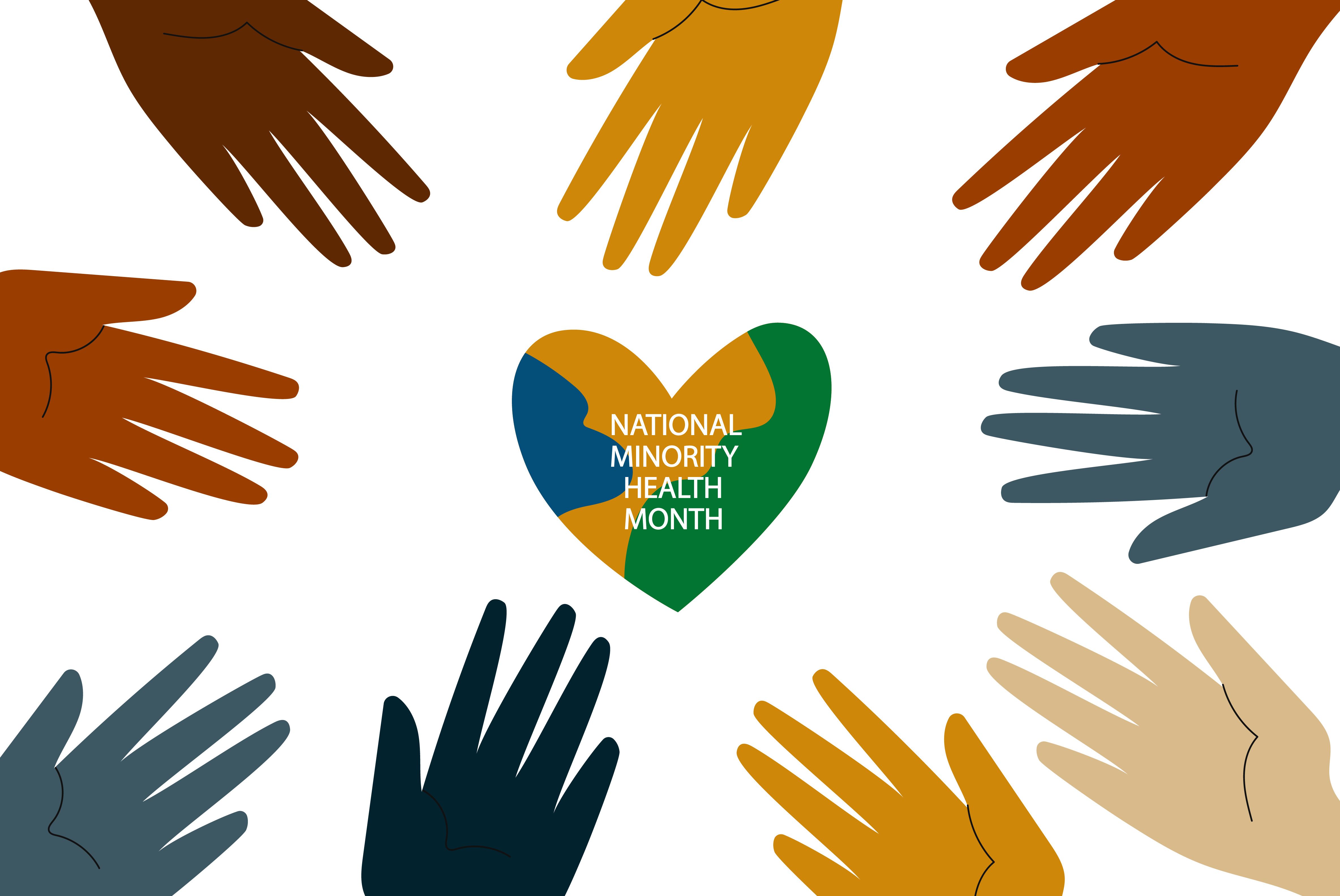News
Article
American Advocacy and Action for Minority Health in 2025
Author(s):
Key Takeaways
- Historical malpractice, including forced sterilizations and unethical studies, has contributed to mistrust in medical research among minority populations.
- Policy-driven disparities, such as redlining, have exacerbated health inequities, impacting minority communities' access to health care and resources.
Accessing equitable health care is an ongoing struggle in the US for minority communities due to historical pretexts with new setbacks surfacing as recent administrative changes emerge, highlighting the urgent need for continued advocacy during National Minority Health Month.
Minority populations in the US experience ongoing struggles in accessing equitable health care due to historical medical malpractice, policy-driven health disparities, and recent administrative setbacks that underscore the urgent need for continued advocacy during National Minority Health Month. | Image Credit: Olga - stock.adobe.com

“For whom was our health care system designed? On what populations is our normative data based?” These are some of the questions Erica E. Marsh, MD, MS, chief of the Reproductive Endocrinology and Infertility Division at the University of Michigan, has been guided by since she began her career in medicine, as stated in a lecture given during a previous American Society for Reproductive Medicine Scientific Congress & Expo.1
National Minority Health Month this April advocates for effective, equitable, and respectful care and services that respond to diverse cultural health beliefs, languages, economic and environmental circumstances, and health literacy to close the health outcome gap for diverse racial and ethnic populations.2
In its broadest term, the US-centric definition of health disparity includes differences in the incidence, prevalence, mortality, burden of disease, and other adverse health conditions that exist among specific population groups. Whereas health inequities, Marsh explained, are systematic differences in the health status of different population groups which are unnecessary, according to the WHO definition.1
“These are largely the results of social constructs vs genetics and biology,” she said.
Historical Medical Malpractice
Throughout American history, medical professionals have committed numerous acts of malpractice against these populations.3 Eugenics, a practice widely accepted, aimed to "protect society from deleterious genes" by preventing individuals deemed inferior or dangerous from reproducing, according to Alex Stern, researcher and author of Eugenic Nation: Faults and Frontiers of Better Breeding in America.
In 1927, the Supreme Court's Buck v Bell decision authorized the sterilization of Carrie Buck, a poor White woman, based on the belief that she would inherit her mother's traits, for which her mother was involuntarily institutionalized. Between the 1920s and 1970s, the Supreme Court mandated the sterilization of approximately 65,000 Americans with mental illness or developmental disabilities.
Racial biases drove eugenics programs. California, in part, acted on anti-Asian and anti-Mexican prejudices, while Southern states used sterilization to control Black communities. Medical students in Southern teaching hospitals performed unnecessary hysterectomies, known as "Mississippi appendectomies," on women of color for practice. In the 1950s, researchers forced Puerto Rican women into sterilization and used them to test the modern birth control pill.4 Researchers provided patients with minimal information about the pill or the study, highlighting ethical issues of informed consent.
More recently, California prisons authorized the sterilization of nearly 150 female inmates between 2006 and 2010.3 The state paid doctors $147,460 from 1997 to 2010 to perform tubal ligations, which former inmates allege were conducted under coercion, according to the Center for Investigative Reporting.5 Sources indicate that approximately 100 more women, dating back to the late 1990s, were coerced into sterilization.
Forced sterilization represents only one form of prejudiced medical practice that shaped history. Other notable instances include the Tuskegee study, conducted from 1932 to 1972, where researchers did not obtain consent from participants or provide treatment, even when available, to Black men aged 25 and older with late-latent syphilis.6
In her lecture, Marsh addressed the permanence of racism, stating it's likely the most controversial tenet because it’s been shaped in the media as the belief that all White people are racist, when, in fact, that’s not what permanence of racism is.1
Erica E. Marsh, MD, MS, Reproductive Endocrinology and Infertility, University of Michigan

Historical medical abuses, such as the Tuskegee syphilis study, the exploitation of Henrietta Lacks, and involuntary sterilization, significantly contribute to the low participation of non-White populations in clinical trial research, setting the trend for inequity gaps and barriers present today.7 Individuals perceived that researchers treat Black, Latino, and other minority populations as "guinea pigs" rather than as equals when compared with White communities. This fostered mistrust rooted in past prejudiced practices, which deters diverse groups from clinical participation.
“The permanence of racism says that our structures are inherently racist because of our historical context,” Marsh said.1 “And then, the result is the privileging of some over others.”
Policy-Driven Health Disparities, Evolving Focus on Equity
Policies that withheld biases exacerbated prejudices against minorities. For example, from 1934 into the 1960s, the Federal Housing Administration (FHA) promoted redlining.8 The FHA collaborated with the Home Owner’s Loan Corporation (HOLC) to approve mortgages based on racially discriminatory criteria. These actions, combined with other forms of continuous discrimination, have resulted in far-reaching impacts on minority populations, impacts that continue to affect them today.
In August 1985, former HHS Secretary Margaret Heckler commissioned “The Report of the Secretary’s Task Force on Black and Minority Health.”9 This report, now widely referred to as the “Heckler Report,” marked the first federal acknowledgment that the nation should prioritize eliminating health disparities. The Task Force reviewed data indicating that minority populations possessed less knowledge or awareness about specific health problems compared with non-minorities.10 This situation appeared particularly critical in areas where minorities suffered a greater burden of illness.
The report incited research studies, such as the Jackson Heart study, the largest study to investigate the genetics of high blood pressure, heart disease, strokes, and diabetes in African American patients.9 This study likely catalyzed the development of the HHS Office of Minority Health.
Shortly after, 6 HHS agencies and many states added offices on minority health. By 2011, HHS released a strategic plan to create a “nation free of disparities in health and health care.” In the same year, the agency released a National Stakeholder Strategy for Achieving Health Equality, incorporating ideas, suggestions, and comments from thousands of contributors across the country.
By the early 2010s, organizations began emphasizing diversity, equity, and inclusion (DEI) programs to strive for equal representation at all economic and social levels achieved by diverse groups, placing greater accountability on government, corporations, and civil society.11 The movement evolved to include gender, sexual orientation, religion, and country of origin, along with other identities.
Prior to the new presidential administration, public-private coalitions primarily focused efforts on minority health care by attacking childhood obesity, improving access to healthy food, addressing health gaps in sexual minority communities, and tackling the root causes of poverty, housing, education, and other social determinants of health.9
The Impact of Trump Administration Policies on Minority Health
Only a few months after President Donald J. Trump’s return to office, his administration targeted federal websites, removing information and data on topics like LGBTQ rights and minority health.12 The administration removed several resources from the National Institutes of Health (NIH), CDC, and HHS to align with Trump’s executive order, which curtailed DEI programs and prohibited federal recognition of gender identity apart from biological sex.11
Three days under the new administration, the FDA removed draft guidance on clinical trial diversity from its website, an unprecedented move made without announcement, rendering sponsors uncertain about the Food and Drug Omnibus Reform Act’s Diversity Action Plan requirements as the June 26, 2025 deadline nears.13
Policies that aimed to amend historically unethical practices have also been revoked, effectively reversing medical progress and strides made toward equity.11 Policies like DEI and Affirmative Action sought to level the playing field for non-White individuals, who experience disproportionately higher rates of poverty and prejudice compared with White individuals.
These decisions signal a change in the current administration’s approach to race, ethnicity, gender, and sexual orientation diversity in health care, which had previously been moving toward greater inclusivity. Immigrants make up a large portion of the minority community, and Trump’s mass deportations will exacerbate shortages in the health care workforce.12 Immigrants contribute largely to federal, state, and local taxes that fund programs like Medicare but cannot access them despite their contributions.
The administration’s new policies inflict a heavy toll on the health and well-being of all minority populations, reaching beyond DEI rollbacks to stricter immigration policies and the perpetuated hate speech and misinformation that has become rampant.12,14 Recent research has shown the impact of these policies has been severe on mental and physical health while straining resources, exacerbating health care disparities, and imposing significant financial burdens on the US health care system.12
In response to social contexts where stories have been historically crafted by individuals outside of minority communities, Marsh calls for counter storytelling, a tenant revolving around the ability of marginalized communities to take charge of their own narratives even when it’s easier to ignore them.1 In essence, counter storytelling serves as a corrective measure to the majoritarian stories that have perpetuated these very stereotypes and biases.
“There are things more important than our discomfort, and there are things that are more important than even our fear—inclusion is more important,” she said. “Our care of our patients and loved ones is more important, and our existence tomorrow has to be more important than our fears today.”
References
1. Grossi G. Confronting history and health inequities together. The American Journal of Managed Care®. October 20, 2023. Accessed April 3, 2025. https://www.ajmc.com/view/confronting-history-health-inequities-together
2. National Minority Health Month 2024 take action. HHS. March 27, 2024. Accessed April 1, 2025. https://www.hhs.gov/national-minority-health-month/take-action/index.html
3. Ko L. Unwanted sterilization and eugenics programs in the United States. Independent Lens. January 29, 2016. Accessed April 2, 2025. https://www.pbs.org/independentlens/blog/unwanted-sterilization-and-eugenics-programs-in-the-united-states/
4. Eugenics and reproductive coercion in Puerto Rico. Center for Latin American & Caribbean Studies. April 28, 2022. Accessed April 2, 2025. https://uwm.edu/clacs/eugenics-and-reproductive-coercion-in-puerto-rico/
5. Johnson CG. Female inmates sterilized in California prisons without approval. Reveal. July 7, 2013. Accessed April 2, 2025. https://revealnews.org/article/female-inmates-sterilized-in-california-prisons-without-approval/
6. About the untreated syphilis study at Tuskegee. The U.S. Public Health Service Untreated Syphilis Study at Tuskegee. September 4, 2024. Accessed April 2, 2025. https://www.cdc.gov/tuskegee/about/index.html
7. Santoro C. Neighborhood deprivation linked to increased breast cancer deaths for White women, but not Black women. AJMC®. June 14, 2023. Accessed April 2, 2025. https://www.ajmc.com/view/neighborhood-deprivation-linked-to-increased-breast-cancer-deaths-for-white-women-but-not-black-women
8. Santoro C. The health-related consequences of redlining. AJMC®. October 3, 2024. Accessed April 2, 2025. https://www.ajmc.com/view/the-health-related-consequences-of-redlining
9. Much done and much still to do 30 years after Heckler Report. goSkagit. August 15, 2015. Accessed April 2, 2025. https://www.goskagit.com/community/health/much-done-and-much-still-to-do-30-years-after-heckler-report/article_092da711-01eb-50d3-a3ee-2e6b1a718b11.html
10. Report of the Secretary’s Task Force on Black and Minority Health: Volume I: Executive Summary: U.S. Department of Health and Human Services: Internet Archive. 2025. Accessed April 2, 2025. https://archive.org/details/reportofsecretar00usde/page/9/mode/1up
11. Santoro C. The uncertain road ahead for health care after DEI rollbacks. AJMC®. February 7, 2025. Accessed April 2, 2025. https://www.ajmc.com/view/the-uncertain-road-ahead-for-health-care-after-dei-rollbacks
12. Santoro C. Trump’s immigration crackdown fuels health crisis: detention, depression, deportation, and disease. AJMC®. March 5, 2025. Accessed April 2, 2025. https://www.ajmc.com/view/trump-s-immigration-crackdown-fuels-health-crisis-detention-depression-deportation-and-disease
13. Grossi G. FDA quietly removes draft guidance on diversity in clinical trials following executive order on DEI. AJMC®. January 31, 2025. Accessed April 3, 2025. https://www.ajmc.com/view/fda-quietly-removes-draft-guidance-on-diversity-in-clinical-trials-following-executive-order-on-dei
14. North A. The most vulnerable target of post-election hate? America’s kids. Vox. December 5, 2024. Accessed April 2, 2025. https://www.vox.com/life/389469/kids-bullying-harassment-trump-racist-texts




